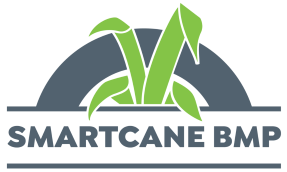The good dirt on productivity: Soil Health and Nutrient Management
Providing adequate nutrients, especially N, P and K, has long been the focus of soil management for sugar cane growers.
However, soil and nutrient management has changed significantly in the past 20 years, greatly improving the efficiency of crop production. Recommendations for optimal N rates have become more accurate and specific, there is greater attention to ensuring all plant nutrients are in adequate supply, trash retention has reduced erosion, controlled traffic farming and/or reduced tillage have improved soil structure and reduced costs, and well-managed legume fallows help break pest and disease cycles while reducing fertiliser costs and improving soil health.
These practices aim to reduce soil constraints to crop production, be they physical like compaction or chemical like sodicity, and therefore greatly improve the effectiveness of applied fertilisers. This, in turn, can improve the bottom line of the business.
It is these practices, and others, that are the subject of the Soil Health and Nutrient Management module of the Smartcane BMP program.
The topics covered in the module include:
- Improving soil health:
- Managing compaction
- Trash management
- Fallow management
- Preparing land for planting
- Tillage management in crop
- Managing salinity, pH and sodicity
- Optimising nutrient management:
- Soil testing of samples from all fallow blocks
- Use of the Six Easy Steps to estimate and refine fertiliser requirements
- Calibration of application equipment
- Placement and timing of fertiliser application
As with all of the BMP modules, the first step is to benchmark, through self-assessment, your own practices against those considered to be industry standard. There are only 12 topics, and corresponding sets of practices, in this module. For example, the industry standard for fallow management is:
Soil cover is maintained throughput the wet season either through the use of a trash blanket and sprayed out cane or through the growth of a fallow crop. No living cane is present during the fallow to help break pest and disease cycles.
You simply indicate if you meet the best practice standard and, if not, what actions you need to take to meet the standard. There may be variations to a practice that reflect the conditions in your district or farm. For example, burning of cane is common in the Burdekin due to the production system, so trash cover is not present and ley crops are their main option for maintaining cover.
Once the self-assessment is completed for this module and for the other two core modules (Irrigation and drainage; Weeds, pests and diseases), and your practices are at industry standard or better, you can seek BMP accreditation. This requires evidence for each topic in a module to be available for independent assessment. For the example of fallow management, the evidence required is:
Farm observation of the soil cover and a spray record where appropriate.
In this case, the evidence is a declaration by your local BMP facilitator that he/she has seen your fallow blocks and the type of soil cover (part of the ‘farm observations’), plus a spray record where cane regrowth has required chemical control. Much of the evidence required in each of the BMP modules is provided via the farm observations made during the on-farm accreditation audit.
If you have not yet participated in the BMP program, your local facilitator will help you register and take you through a self-assessment and will even enter the information onto the BMP database. If you have completed self-assessment in the 3 core modules, your local facilitator will help you identify any gaps in the required records and other documentation. He/she will also assist with gathering items like farm maps and will provide easy-to-use templates for any additional records you need to keep over the coming season.
Once you have gathered the evidence, the local facilitator does a check that all necessary evidence is in place (a pre-audit).
Required evidence for the Soil Heath and Nutrient Management module
The documentation required for at least one year of crop production includes:
- Soil test results
- Nutrient recommendations
- Fertiliser application records
- Ameliorant application records
- Harvest dates
